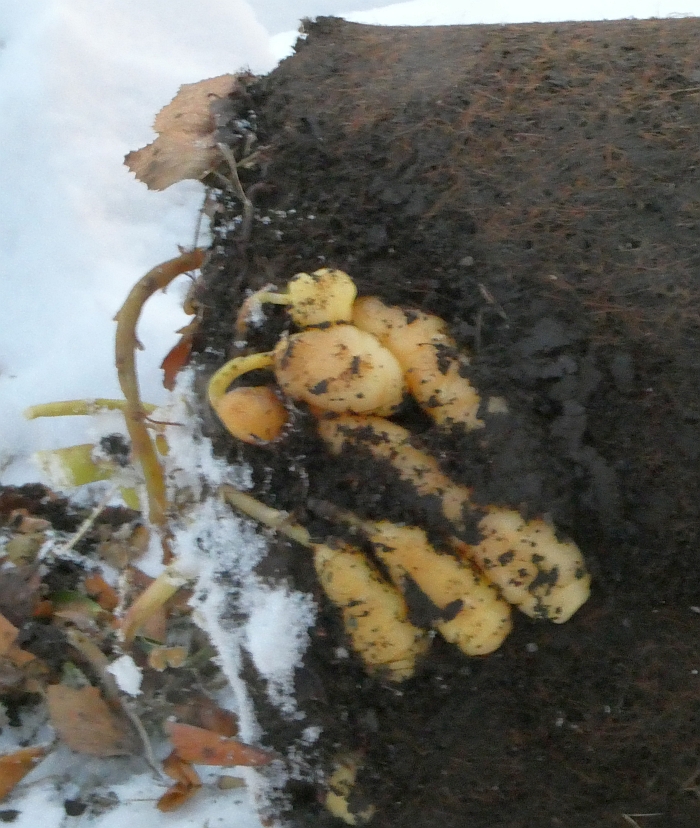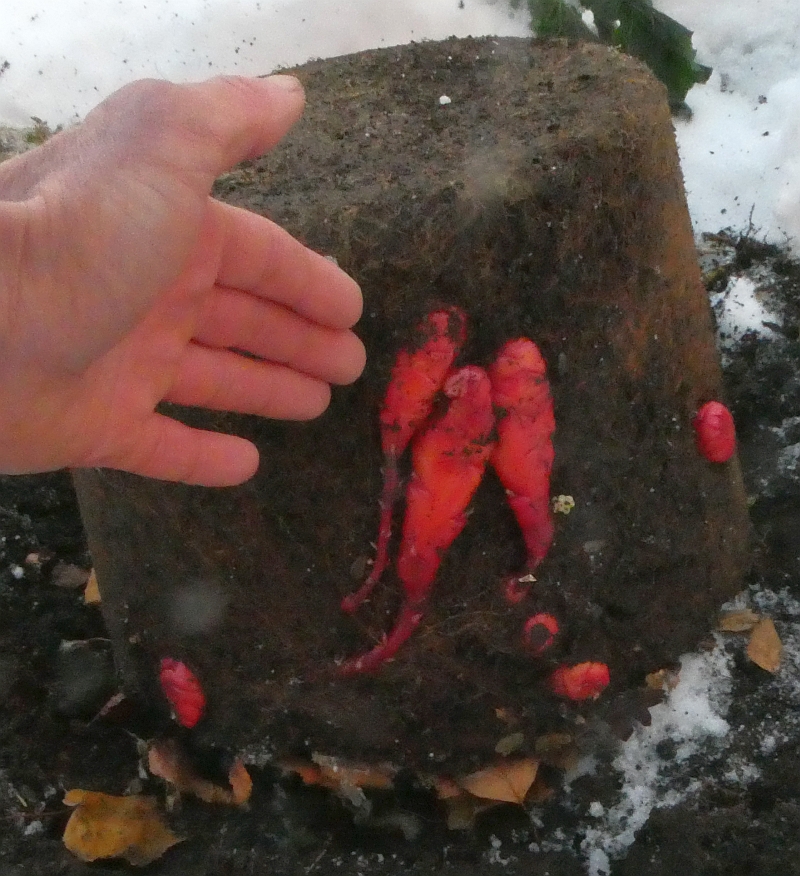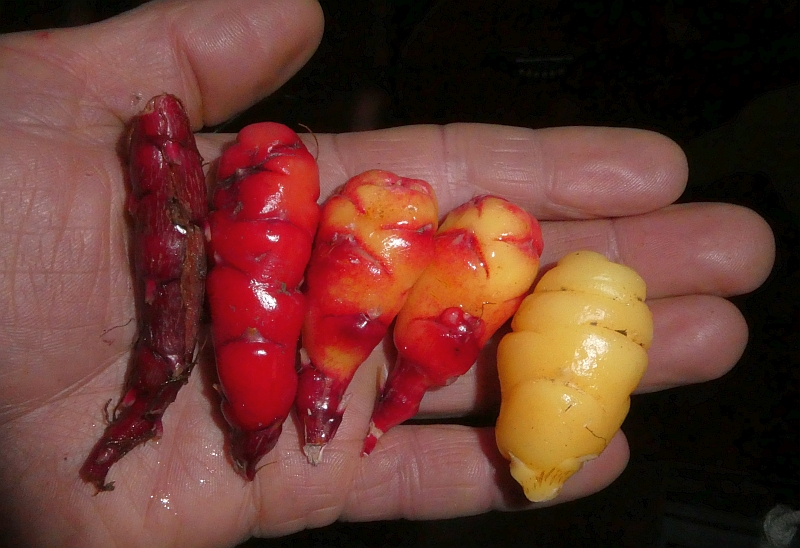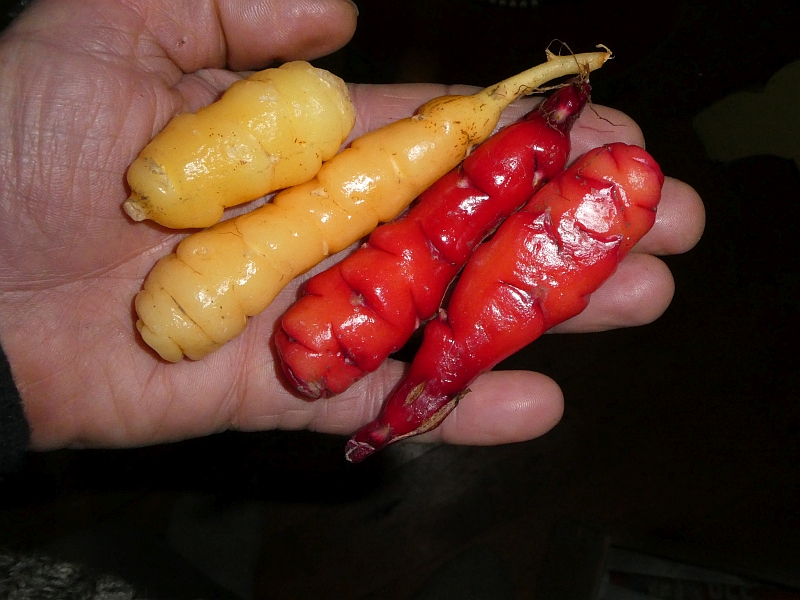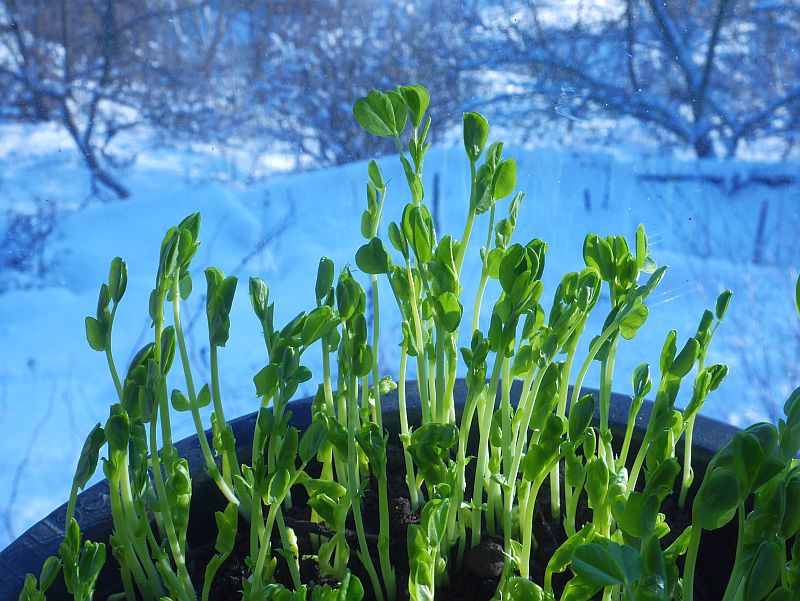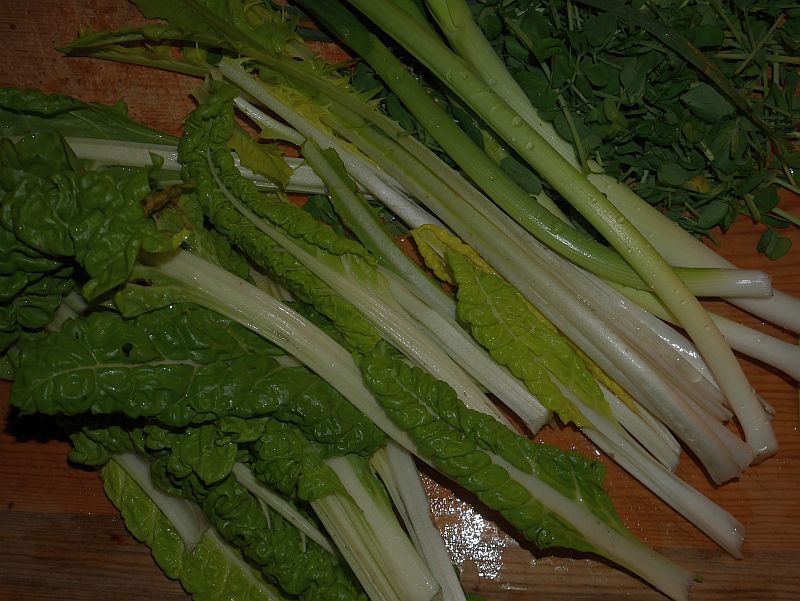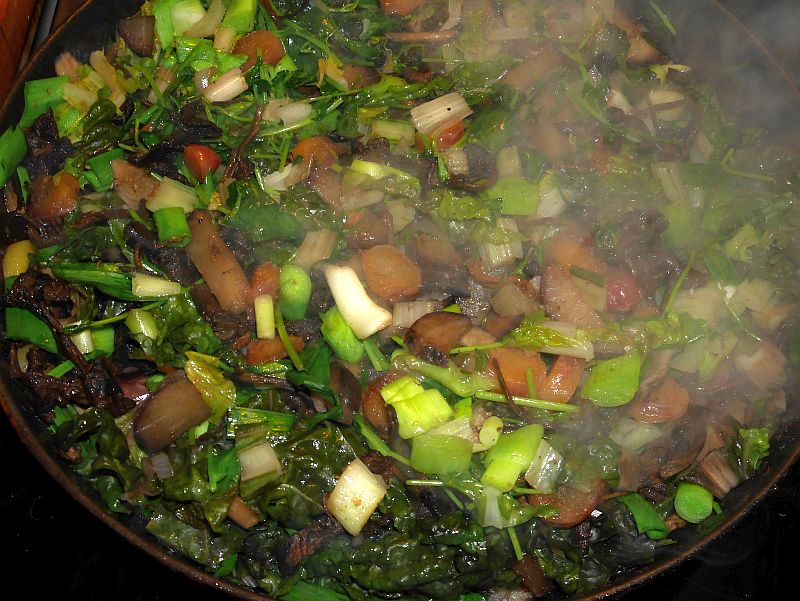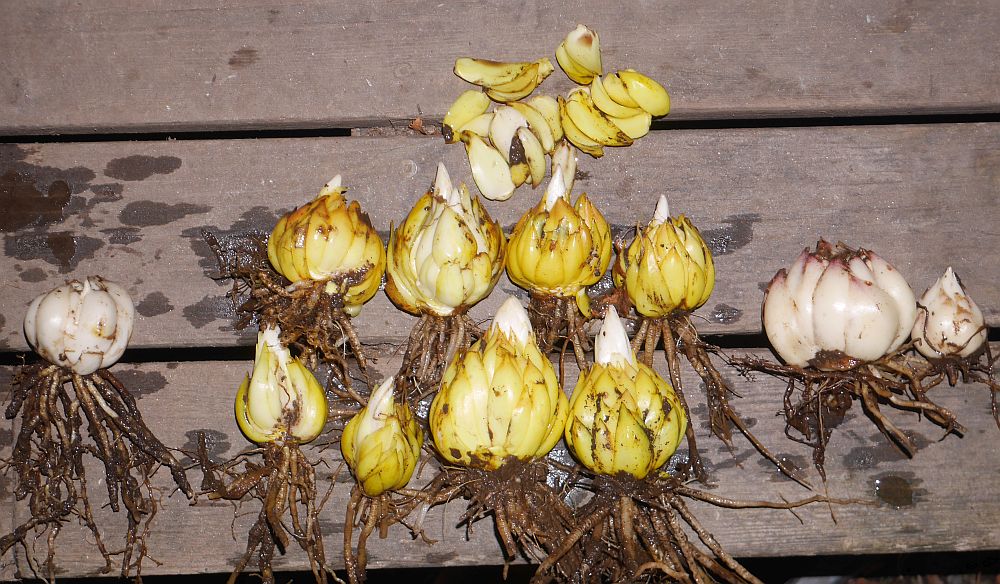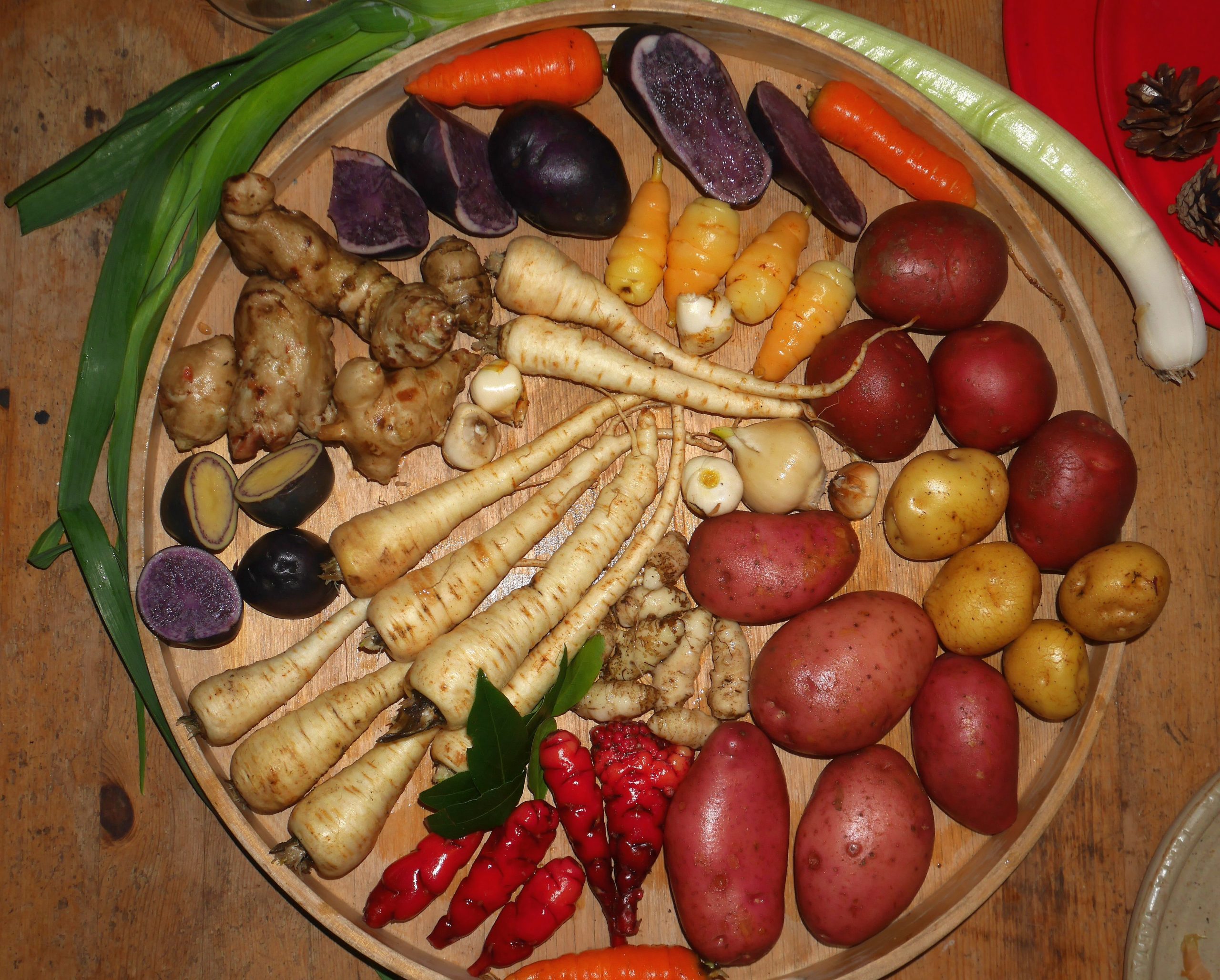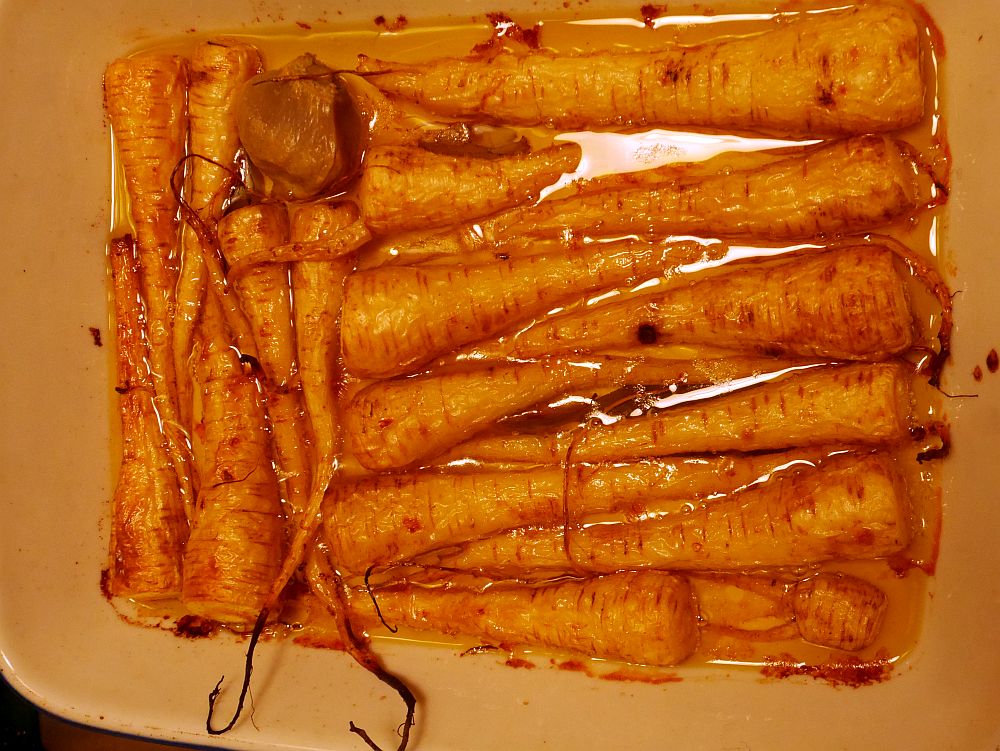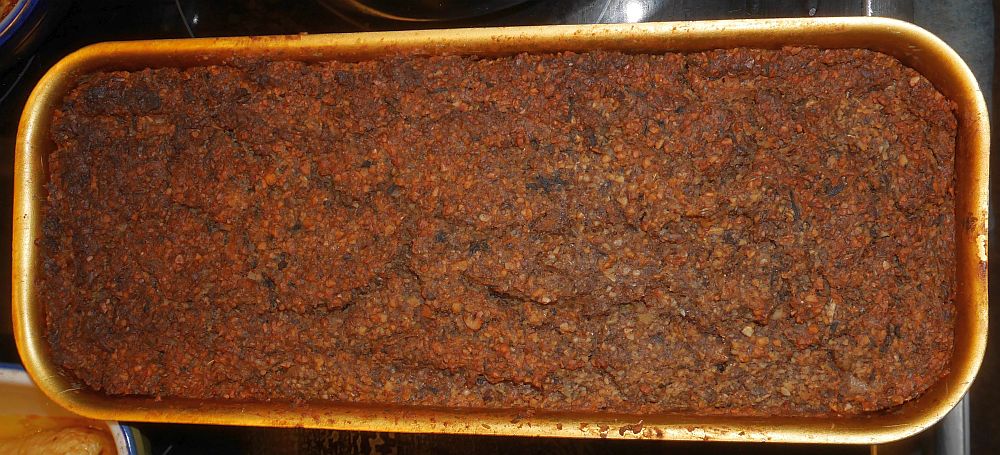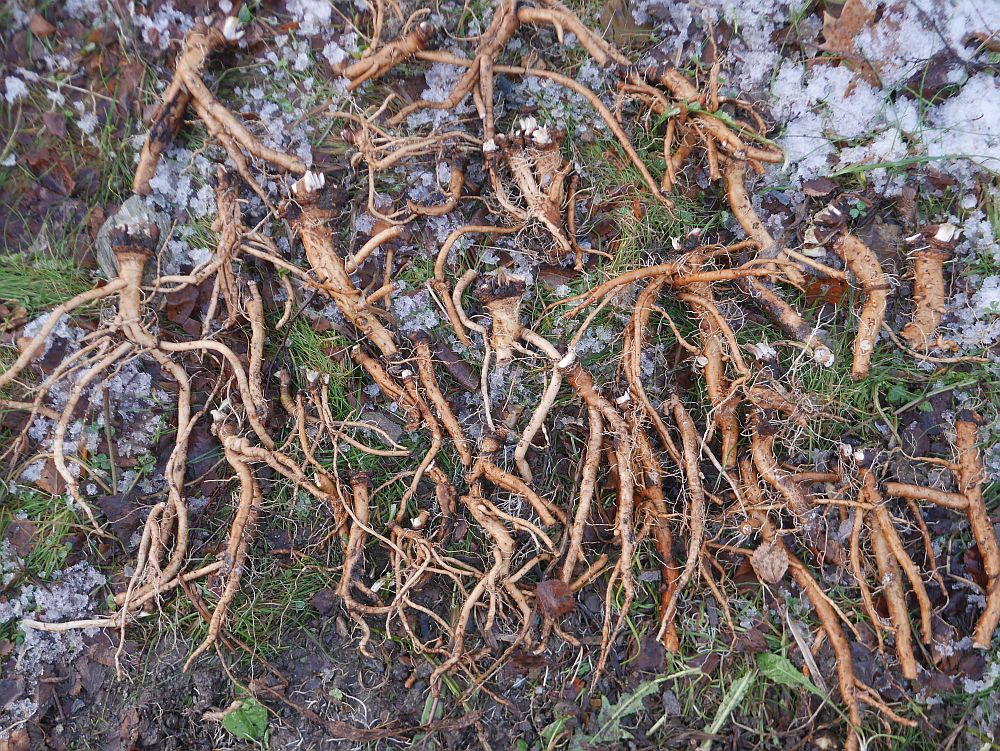Wonderful rain on the balcony (aka zone 0.5) with oca (Oxalis tuberosa), 9 varieties of lettuce (salat), tomato “42 days” , dill, coriander, toothache pant (Spilanthes), shungiku / kronkrage and lots of celery (around the corner). The large bucket in the corner contains burdock providing seed fot goldfinches (stillits) and greenfinches (grønnfink) in winter (a living bird feeder!)
Tag Archives: Oca
Seed saving talk weekend
Thanks to KVANN (Norwegian Seed Savers) colleague Andrew McMillion for coming up to Trondheim to give his seed saving course for local KVANN and Væres Venner Community Garden members!
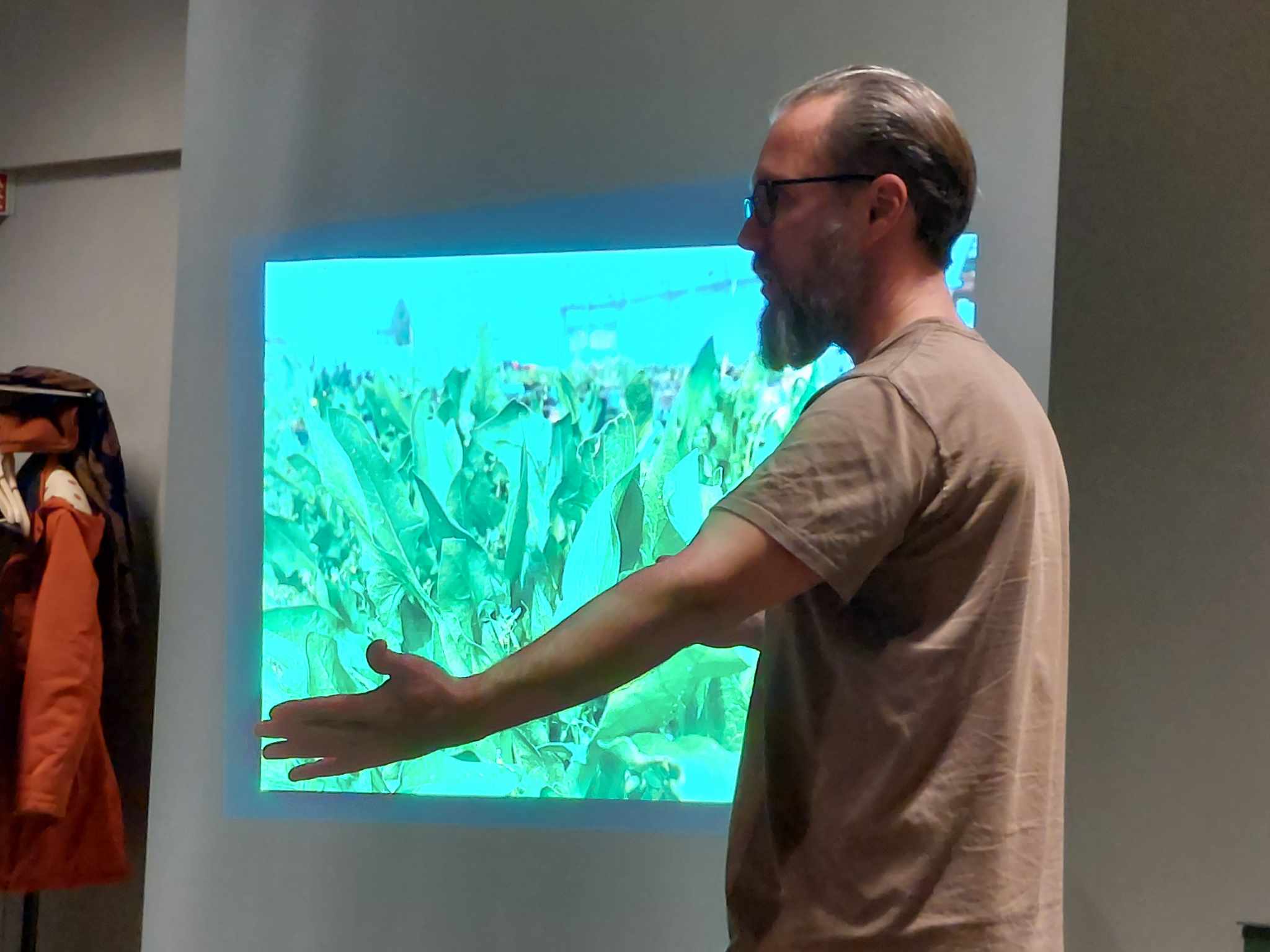
…and there was time for a Malvik visit, a seed saving and breeding chat, a tour of my seed boxes and a little salad with Witloof chicory and dandelion pizza.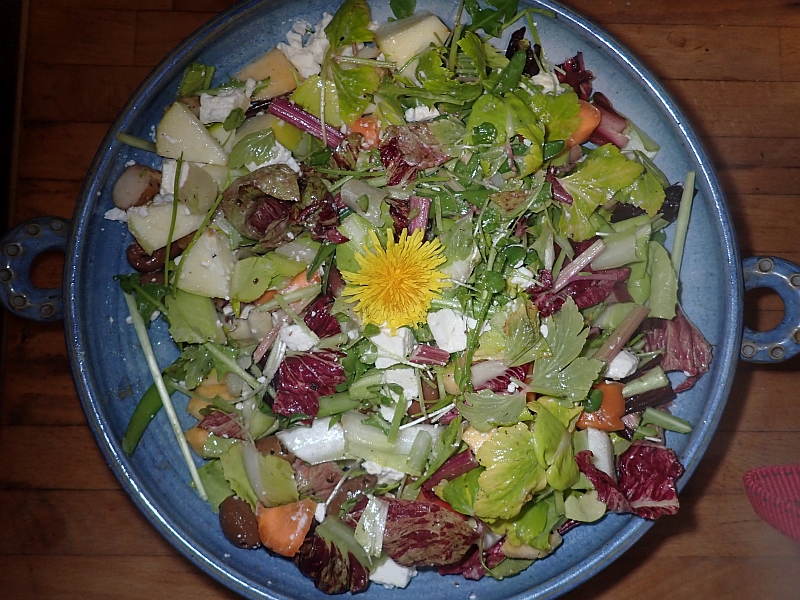
 Salad ingredients: Celery, three chicory varieties, dandelion (including one flower), carrot, Japanese yams, Allium cernuum and Hablitzia (from the garden), Hristo’s onion (Allium flavescens x nutans?), oca (2 varieties), apple (Aroma), horseradish shoots, garlic, chives, wild buckwheat shoots and turnip “Målselvnepe”
Salad ingredients: Celery, three chicory varieties, dandelion (including one flower), carrot, Japanese yams, Allium cernuum and Hablitzia (from the garden), Hristo’s onion (Allium flavescens x nutans?), oca (2 varieties), apple (Aroma), horseradish shoots, garlic, chives, wild buckwheat shoots and turnip “Målselvnepe”
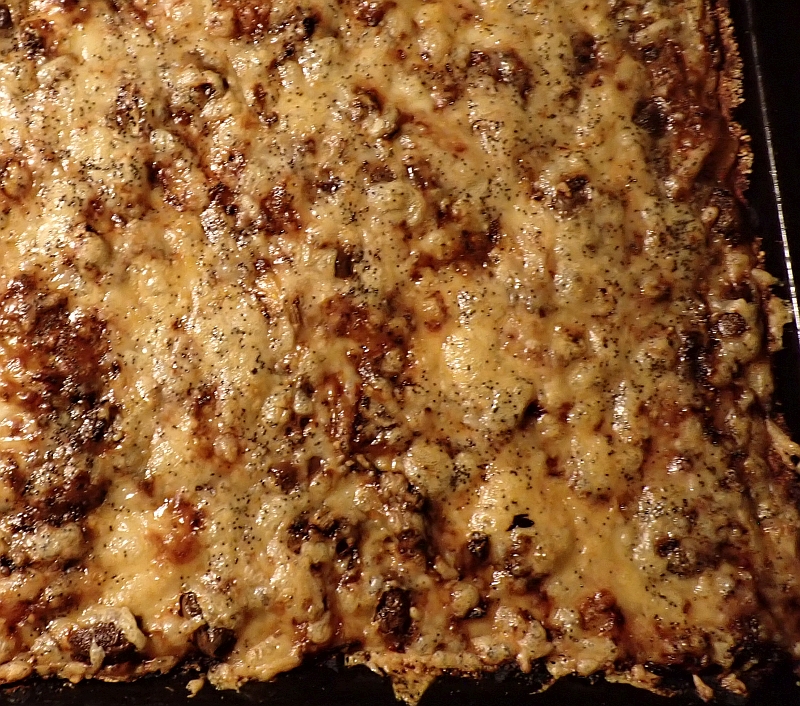
…and my seed archive:
Wild Enoki, Oca and Hablitzia scrambled eggs
Wild Enoki, Oca, Hablitzia, wild buckwheat sprouts, Allium nutans with dandelion, garlic chilis mixed with scrambled eggs for a delicious home grown and foraged lunch!
Enoki is one of the hardiest fungi appearing often midwinter in mild winters. Also known as velvet shank (vintersopp in Norwegian, meaning winter fungus; Flammulina velutipes). Many had been reporting finding this species recently, and I too found some when I visited the botanical garden the other day! It’s difficult to believe that this is the same fungi as Enokitake or Enoki, sometimes offered in supermarkets and one of the most popular cultivated fungi in the Far East. The cultivated fungi are long and white as they are grown in the dark in an enriched CO2 environment which gives longer stalks.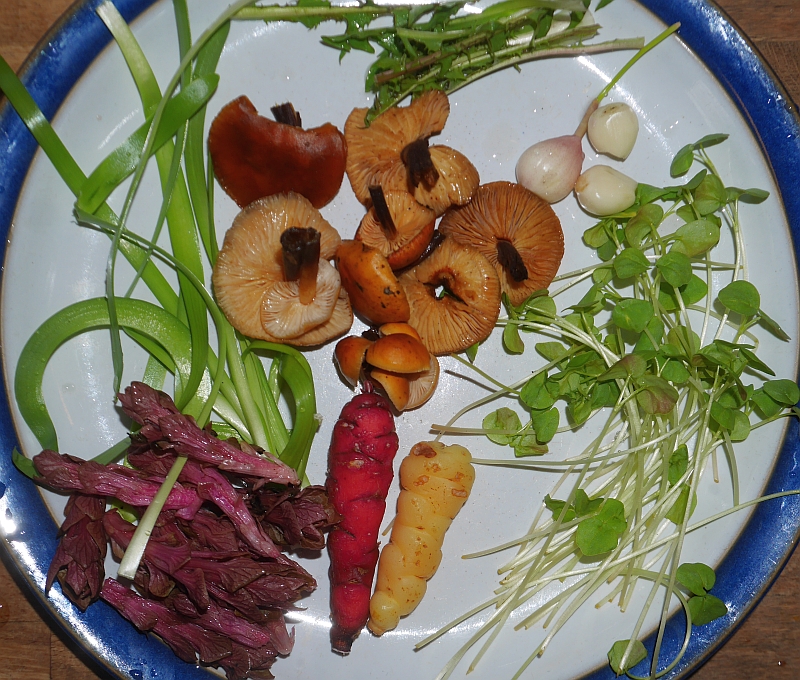

Habby Chicago Eggs
I was showing a journalist around the winter edible garden and cellar this morning and dug up some nodding (Chicago) onions (Allium cernuum) and picked a few Hablitzia shoots, so why not turn it into lunch! I sliced an oca (Oxalis tuberosa) in with the vegetables. Scambled Habby Chicago eggs is simple gourmet midwinter food from garden to table in no time!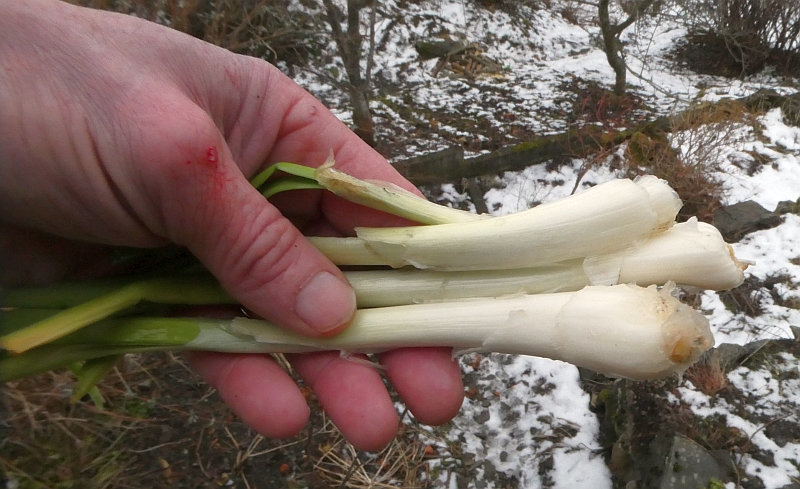
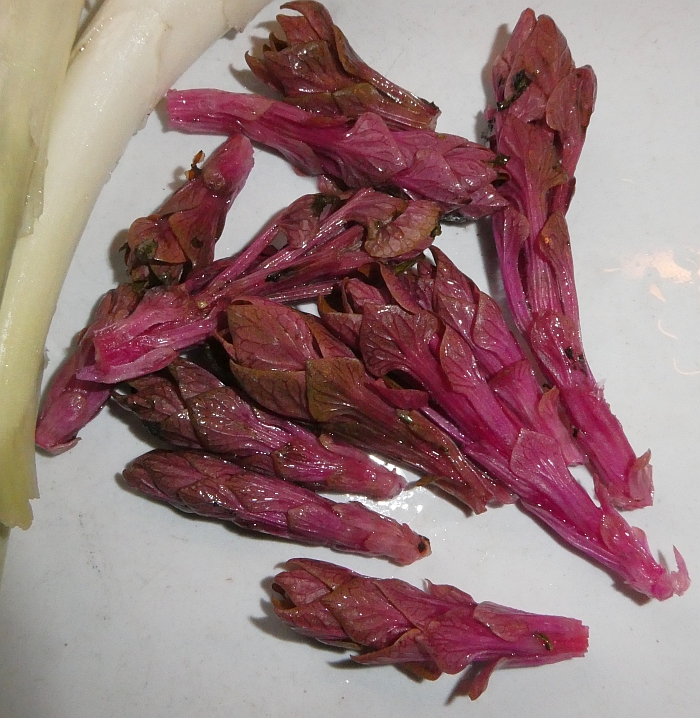
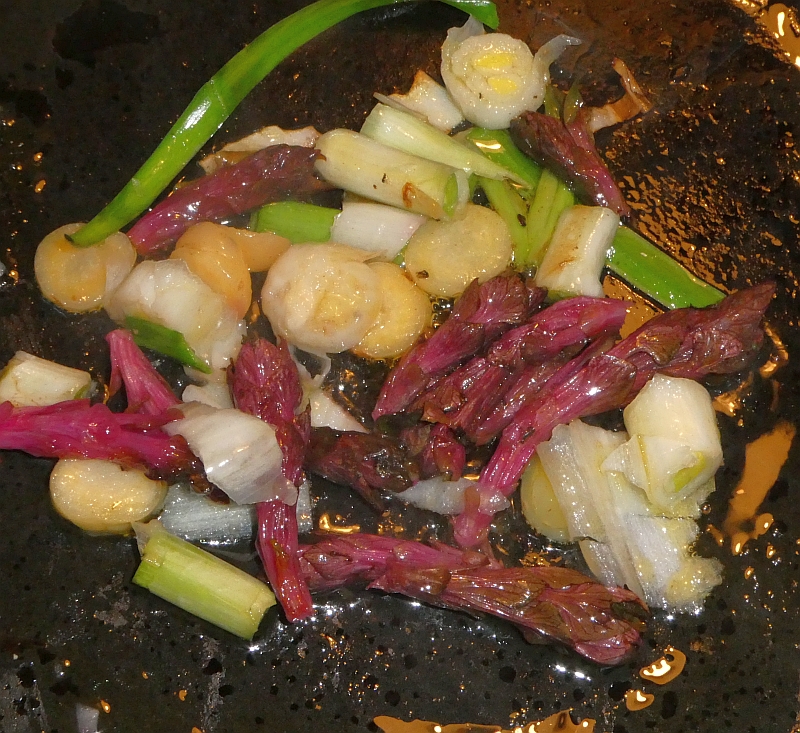

Xmas diversity from the rhizosphere
Presenting this year’s 30 rhizosphantastic Xmas vegetables, all roasted in the oven, served as every year in the last 40 with nut roast, bedecked with the following seeds / bulbils: alpine bistort / harerug (Polygonum viviparum), Himalayan balsam / kjempefringfrø (Impatiens glandulifera), evening primrose / nattlys (Oenothera biennis) and opium poppy (Papaver somniferum). The tubers are listed below the pictures.


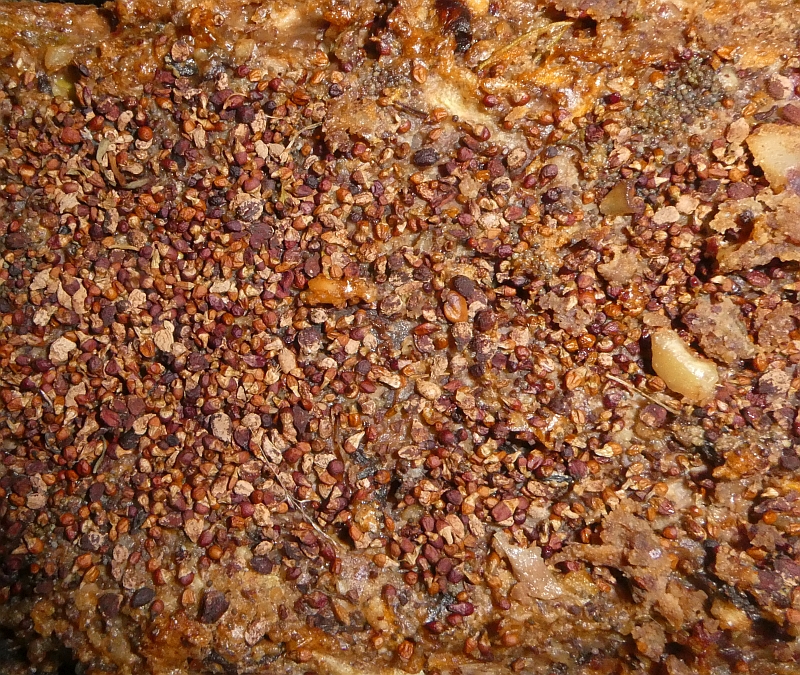
The 30 tubers, roots and rhizomes in the picture are:
Solanum tuberosum (potato / potet: 11 varieties)
Daucus carota (carrot / gulrot)
Oxalis tuberosa (oca: 2 varieties)
Arctium lappa (burdock)
Scorzonera hispanica (Scorzonera / scorsonnerot eller svartrot)
Tigridia pavonia (cacomitl)
Pastinaca sativa (parsnip / pastinakk)
Beta vulgaris (beetroot / rødbete)
Tropaeolum tuberosum (mashua)
Anredera cordifolia (Madeira vine)
Helianthus tuberosus (Jerusalem artichoke / jordskokk : 3 varieties)
Brassica rapa (turnip / nepe)
Brassica napus (swede / kålrot)
Dahlia (Dahlia / georginer)
Polymnia sonchifolia (yacon)
Sagittaria latifolia (wapato)
Allium cepa (onion)
Oca harvest 2022
Xmas isn’t Xmas without Oca and a hoard of other tubers, served with the traditional nut roast. Pre-xmas preparations includes the annual oca harvest. Oca (Oxalis tuberosa) is a short day root crop hailing from the central and southern Andes. When harvested at the first frosts, yields are poor, the plants needing a long mild autumn to fatten up the tubers for the festive season. I therefore grow my oca in large buckets which we bring into the extension to the house at the first hard frosts which was late October this year. We don’t heat the extension which is normally a fairly constant 5-10C in winter and hence a good place to store vegetables and other plants like my bay tree (Laurus nobilis). There’s no sunlight and I don’t use artificial light so there’s no diurnal variation in temperature either. The oca plants don’t grow vegetatively, but miraculously the tubers do grow over the few weeks to harvest:
Xmas day Rhizofantastigora dinner 2021
Xmas dinner in Malvik has been nut roast and roasted roots every year since 1984! This year there were 27 different roots: parsnip, 15 different varieties of potato, bulb onions, Tigridia (cacomitl), wapato (Sagittaria), carrot, beetroot, oca (red and yellow), Madeira vine (Anredera cordifolia), yacon (Polymnia), garlic (Allium sativum), Dioscorea polystachya (Chinese yam) and chicory root (at the top).
The nut roast was made from ground walnuts, hazelnuts and almonds with grated carrots, onion and beetroot with garlic, golpar (Heracleum seed spice), egg, salt, pepper and chili, bedecked with buckwheat groats (home grown by a friend in Czechoslovakia), Himalayan balsam seed, caraway, dill and alpine bistort bulbils (Polygonum viviparum).
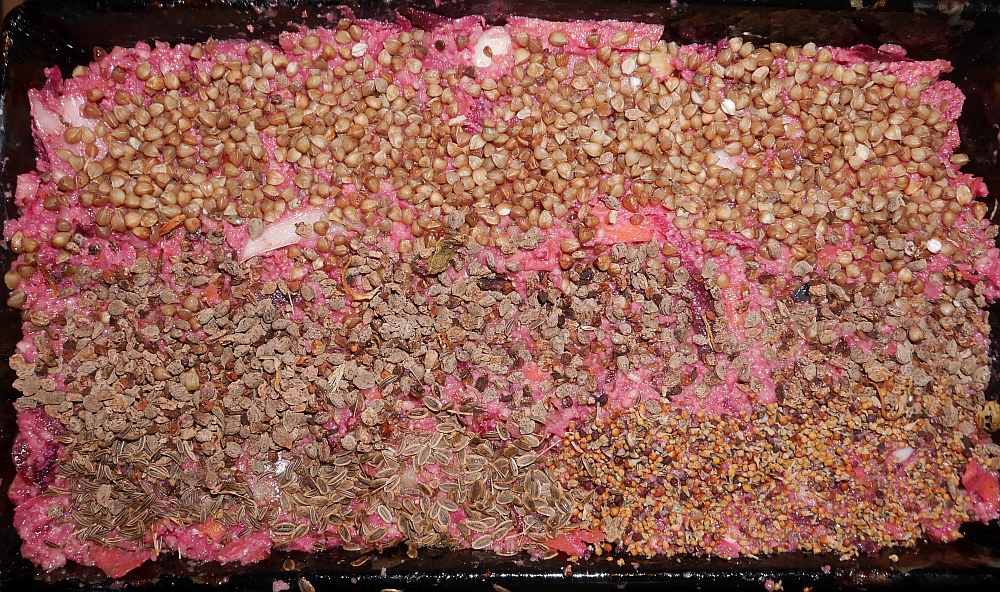
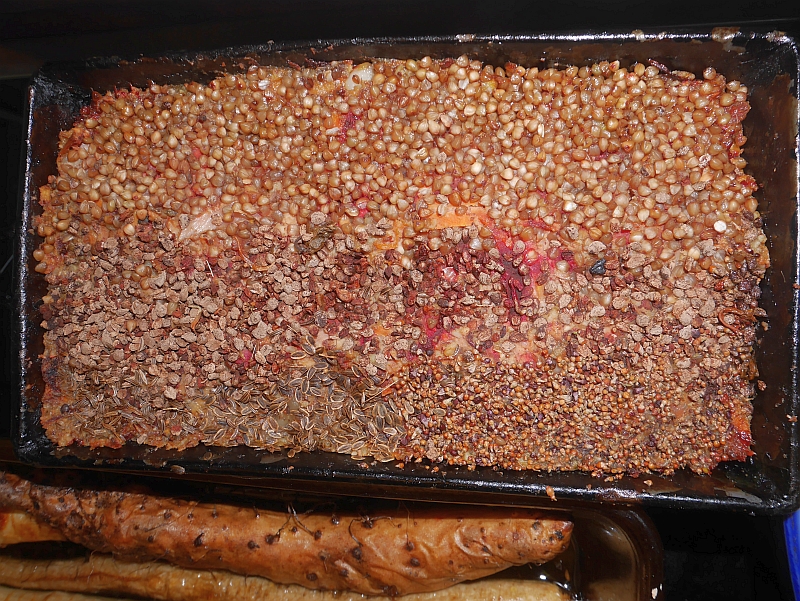

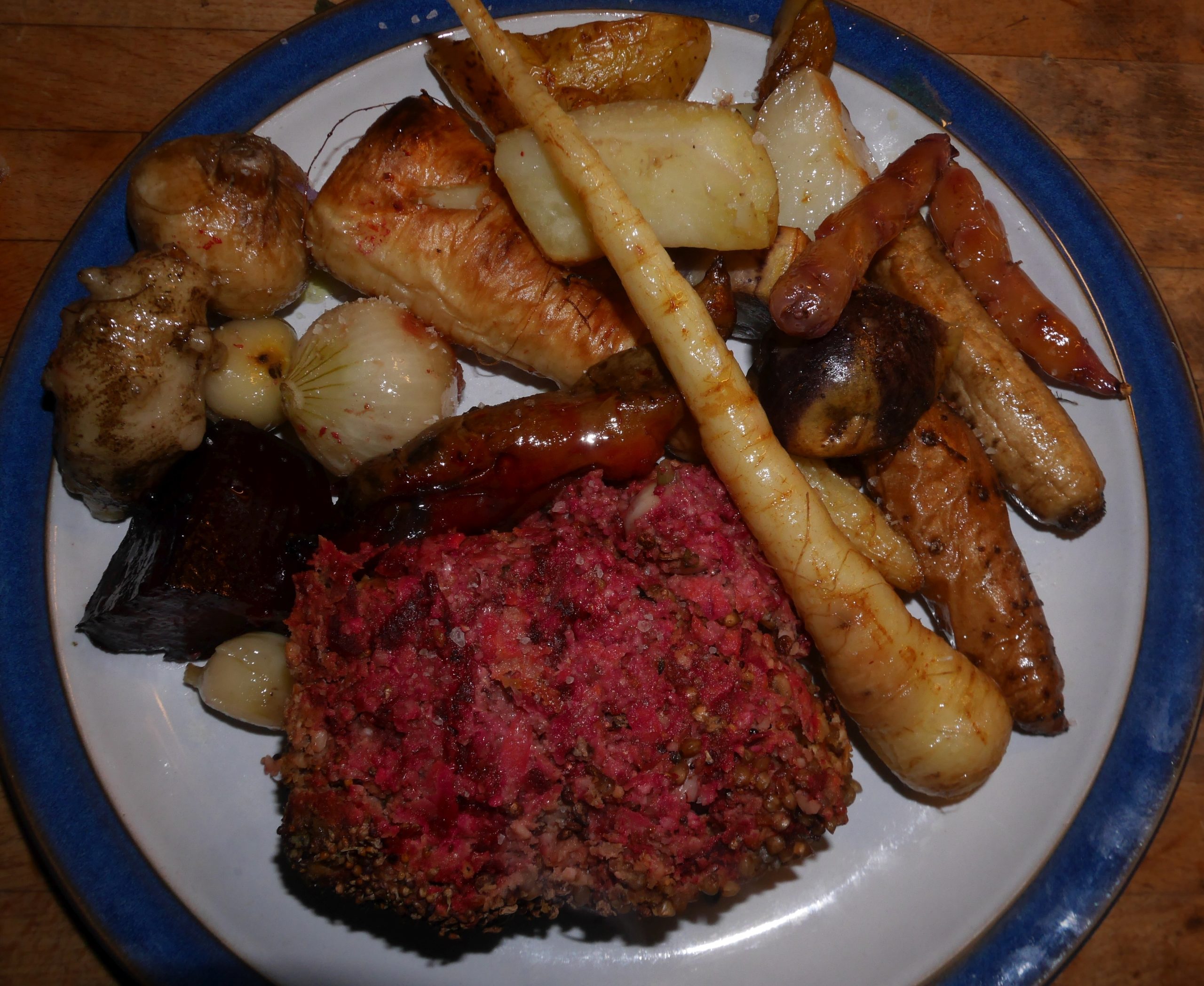
A real Oca yield outside at 63.4N
Two days ago, the latest first frost date was registered in Trondheim for 130 years! This has allowed my oca (Oxalis tuberosa), one of the Lost Crops of the Incas, to develop properly for the first time! This is a short day plant, tuberising late in the season! These were grown in the World Garden at the community garden Væres Venner, one of the gardens in @kvann_norwegianseedsavers Schubelers Network.
An apparent new variety has also turned up and as far as I know no seed has been involved, so I guess it’s a genetic mutation, seemingly halfway between the other two varieties. Of course, I will be replanting this one next year (see the third picture)!
My other pot-grown ocas were moved into my porch extension just before the frost and will be grown on for Xmas harvest as usual.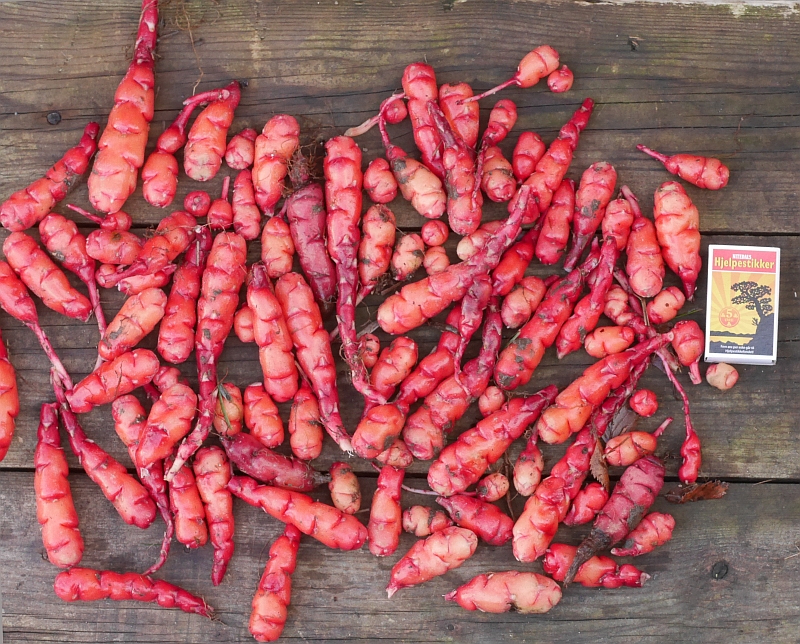


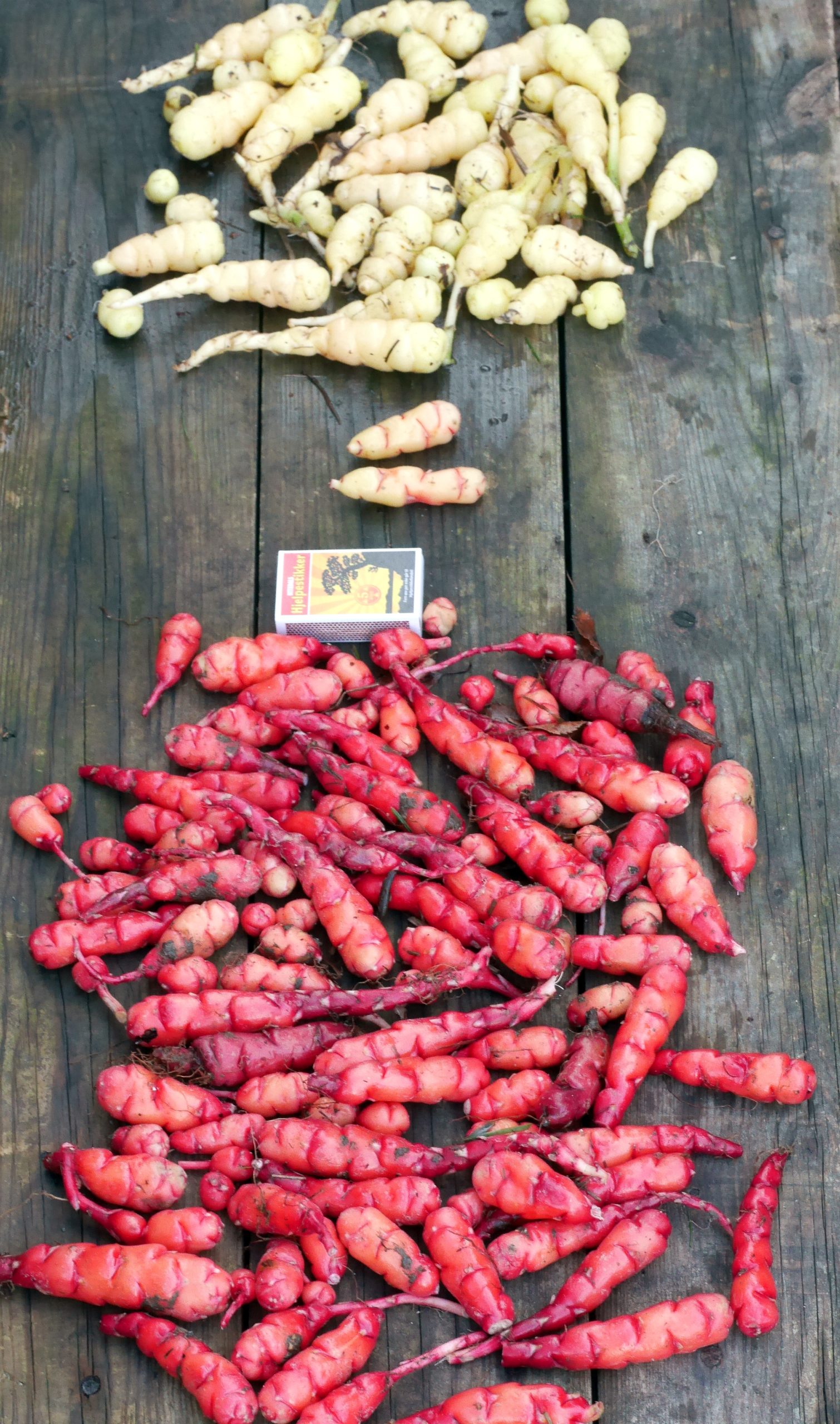
Winter stir-fry
People are always asking me for recipes. I rarely follow recipes as my ingredients vary so much and I just use what I have available. However, I do follow a number of basic, mostly lacto-vegetarian recipes which I’ve evolved to my liking over the years. For instance, last night I used
a) Pea shoots (erteskudd), harvested about 25cm high (before they get too coarse to use; I don’t cut them right down to the soil as they will then resprout once or twice before giving up; to do this, they must be grown in a bucket or similar in deep soil); the peas were a mixture of about twenty home grown varieties, including several heirlooms such as Norwegian Jærert and Ringeriksert).
b) Swiss chard / mangold (it’s been too cold for this to regrow in the cellar where it’s planted in soil)
c) Chicory “Catalogna gigante di Chioggia” (sikkori) (this had resprouted in the cellar from the roots)
d) Leeks / purre (also stored in soil in the cellar)
e) Yacon (sliced tubers)
f) Scorzonera / scorsonnerot (sliced tubers)
g) Oca (oka) (Oxalis tuberosa)
h) Garlic / hvitløk
i) Chili / chili
j) Bulb onions / kepaløk
k) golpar (ground seed of various Heracleum species; bjørnekjeks / Tromsøpalme)
The roots are stir-fried first (in olive oil), then the onions are added and at the end the greens for 5-10 minutes, finally mixing in chili, salt and pepper. Served either over whole grain spelt pasta or mixed as a risotto (I use barley normally for a barlotto) with strong cheese or parmesan.
The roots are stir-fried first (in olive oil), then the onions are added and at the end the greens for 5-10 minutes, finally mixing in chili, salt and pepper. Served either over whole grain spelt pasta or mixed as a risotto with strong cheese or parmesan.
Tubers and roots; December 2020
A gallery of pictures of tubers and roots which were harvested in December when I had a blog-free month!


